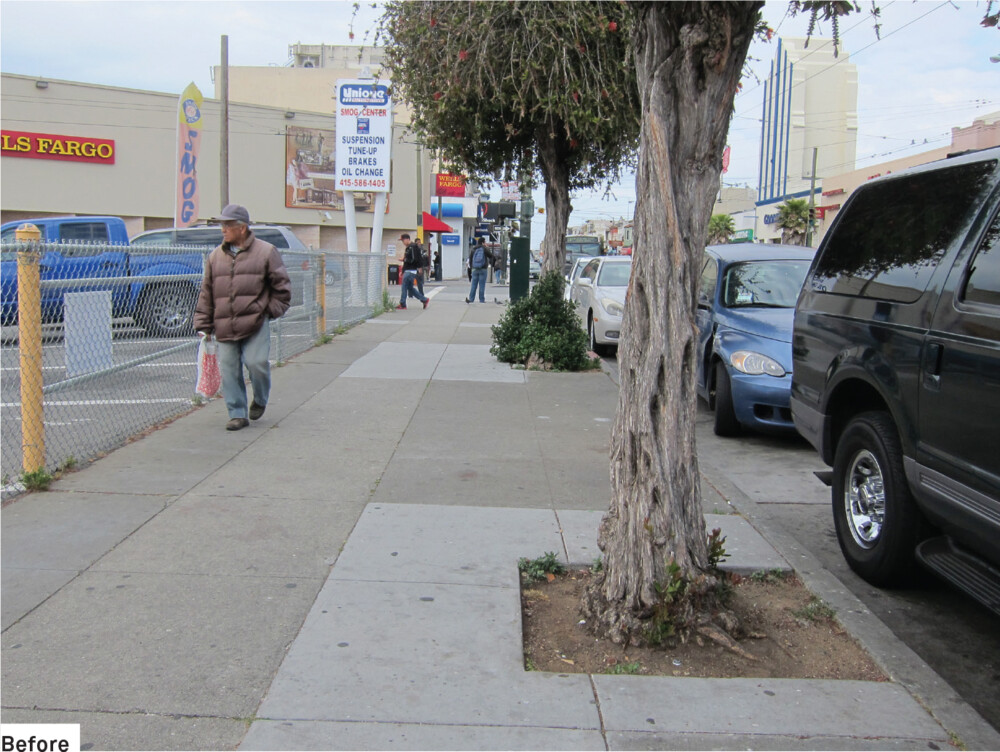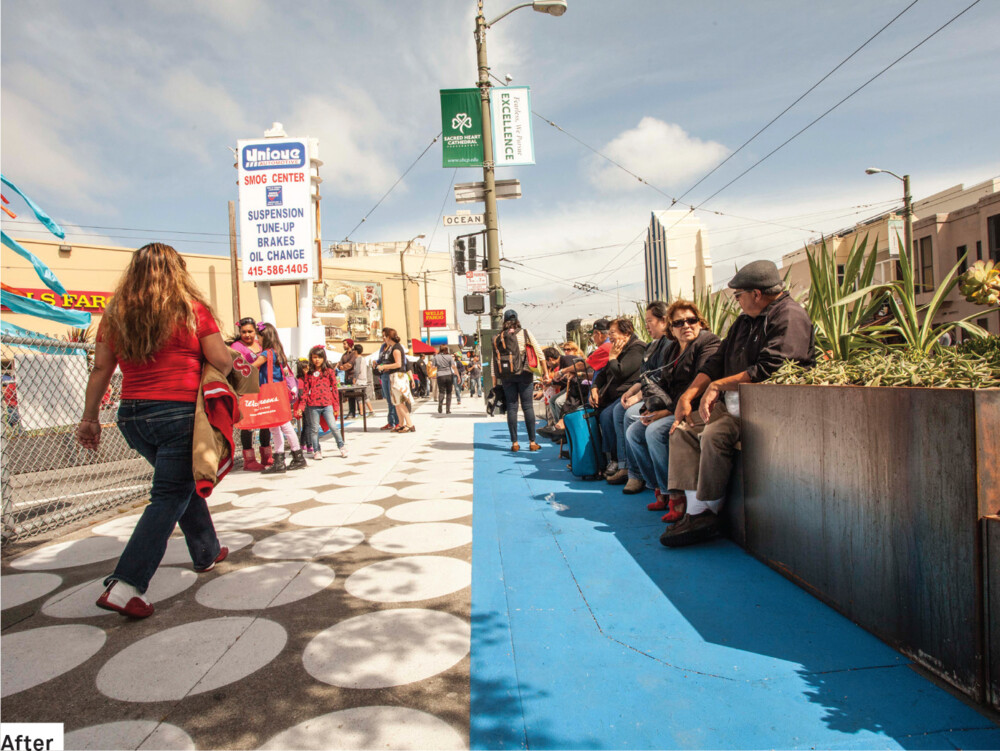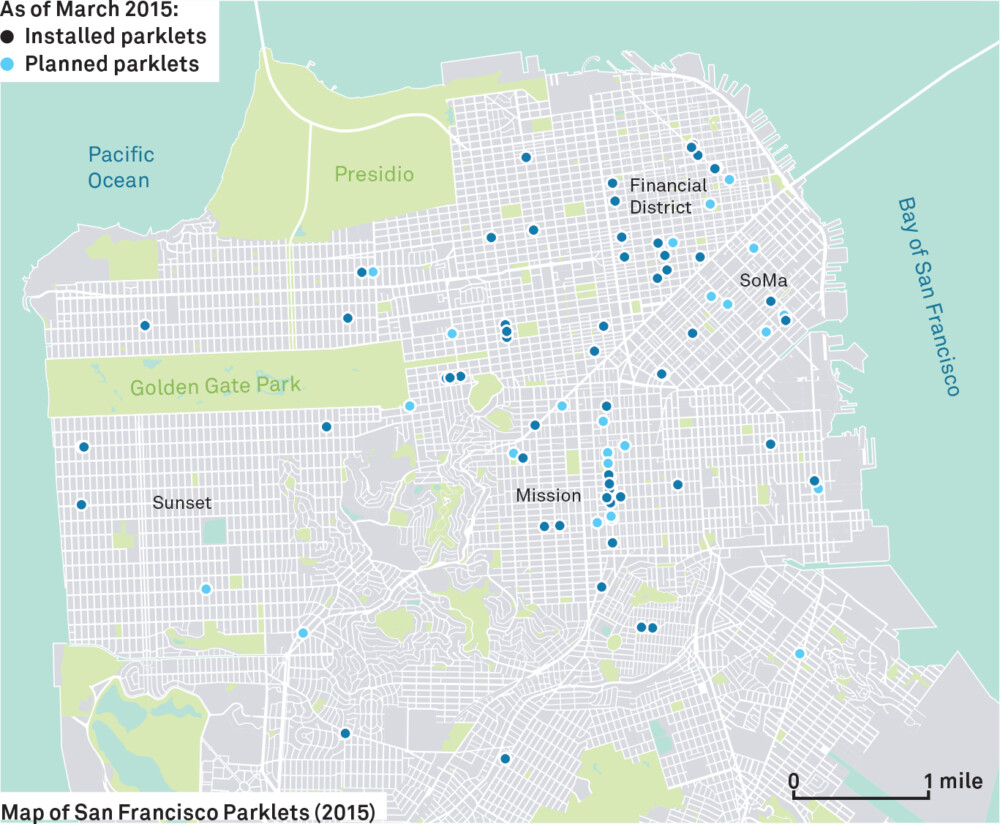-
About Streets
- Introduction
- Defining Streets
-
Shaping Streets
- The Process of Shaping Streets
- Aligning with City and Regional Agendas
- Involving the Right Stakeholders
- Setting a Project Vision
- Communication and Engagement
- Costs and Budgets
- Phasing and Interim Strategies
- Coordination and Project Management
- Implementation and Materials
- Management
- Maintenance
- Institutionalizing Change
- Measuring and Evaluating Streets
-
Street Design Guidance
- Designing Streets for Great Cities
- Designing Streets for Place
-
Designing Streets for People
- Utilities and Infrastructure
- Operational and Management Strategies
- Design Controls
-
Street Transformations
- Streets
-
Intersections
- Intersection Design Strategies
- Intersection Analysis
- Intersection Redesign
- Mini Roundabout
- Small Raised Intersection
- Neighborhood Gateway Intersection
- Intersection of Two-Way and One-Way Streets
- Major Intersection: Reclaiming the Corners
- Major Intersection: Squaring the Circle
- Major Intersection: Cycle Protection
- Complex Intersection: Adding Public Plazas
- Complex Intersection: Improving Traffic Circles
- Complex Intersection: Increasing Permeability
- Resources
Global Street Design Guide
-
About Streets
- Introduction
- Defining Streets
-
Shaping Streets
Back Shaping Streets
- The Process of Shaping Streets
- Aligning with City and Regional Agendas
- Involving the Right Stakeholders
- Setting a Project Vision
- Communication and Engagement
- Costs and Budgets
- Phasing and Interim Strategies
- Coordination and Project Management
- Implementation and Materials
- Management
- Maintenance
- Institutionalizing Change
-
Measuring and Evaluating Streets
Back Measuring and Evaluating Streets
-
Street Design Guidance
-
Designing Streets for Great Cities
Back Designing Streets for Great Cities
-
Designing Streets for Place
Back Designing Streets for Place
-
Designing Streets for People
Back Designing Streets for People
- Comparing Street Users
- A Variety of Street Users
-
Designing for Pedestrians
Back Designing for Pedestrians
- Designing for Cyclists
-
Designing for Transit Riders
Back Designing for Transit Riders
- Overview
- Transit Networks
- Transit Toolbox
-
Transit Facilities
Back Transit Facilities
-
Transit Stops
Back Transit Stops
-
Additional Guidance
Back Additional Guidance
-
Designing for Motorists
Back Designing for Motorists
-
Designing for Freight and Service Operators
Back Designing for Freight and Service Operators
-
Designing for People Doing Business
Back Designing for People Doing Business
-
Utilities and Infrastructure
Back Utilities and Infrastructure
- Utilities
-
Green Infrastructure and Stormwater Management
Back Green Infrastructure and Stormwater Management
-
Lighting and Technology
Back Lighting and Technology
-
Operational and Management Strategies
Back Operational and Management Strategies
- Design Controls
-
Street Transformations
-
Streets
Back Streets
- Street Design Strategies
- Street Typologies
-
Pedestrian-Priority Spaces
Back Pedestrian-Priority Spaces
-
Pedestrian-Only Streets
Back Pedestrian-Only Streets
-
Laneways and Alleys
Back Laneways and Alleys
- Parklets
-
Pedestrian Plazas
Back Pedestrian Plazas
-
Pedestrian-Only Streets
-
Shared Streets
Back Shared Streets
-
Commercial Shared Streets
Back Commercial Shared Streets
-
Residential Shared Streets
Back Residential Shared Streets
-
Commercial Shared Streets
-
Neighborhood Streets
Back Neighborhood Streets
-
Residential Streets
Back Residential Streets
-
Neighborhood Main Streets
Back Neighborhood Main Streets
-
Residential Streets
-
Avenues and Boulevards
Back Avenues and Boulevards
-
Central One-Way Streets
Back Central One-Way Streets
-
Central Two-Way Streets
Back Central Two-Way Streets
- Transit Streets
-
Large Streets with Transit
Back Large Streets with Transit
- Grand Streets
-
Central One-Way Streets
-
Special Conditions
Back Special Conditions
-
Elevated Structure Improvement
Back Elevated Structure Improvement
-
Elevated Structure Removal
Back Elevated Structure Removal
-
Streets to Streams
Back Streets to Streams
-
Temporary Street Closures
Back Temporary Street Closures
-
Post-Industrial Revitalization
Back Post-Industrial Revitalization
-
Waterfront and Parkside Streets
Back Waterfront and Parkside Streets
-
Historic Streets
Back Historic Streets
-
Elevated Structure Improvement
-
Streets in Informal Areas
Back Streets in Informal Areas
-
Intersections
Back Intersections
- Intersection Design Strategies
- Intersection Analysis
- Intersection Redesign
- Mini Roundabout
- Small Raised Intersection
- Neighborhood Gateway Intersection
- Intersection of Two-Way and One-Way Streets
- Major Intersection: Reclaiming the Corners
- Major Intersection: Squaring the Circle
- Major Intersection: Cycle Protection
- Complex Intersection: Adding Public Plazas
- Complex Intersection: Improving Traffic Circles
- Complex Intersection: Increasing Permeability
- Resources
- Guides & Publications
- Global Street Design Guide
- Streets
- Pedestrian-Priority Spaces
- Parklets
- Case Study: Pavement to Parks; San Francisco, USA
Case Study: Pavement to Parks; San Francisco, USA

Location: San Francisco, California, USA
Population: 0.8 million
Metro: 4.5 million
Extent: 65 parklets installed citywide; 7 street plazas installed citywide
Size: 2–2.5 m x 10–12 m
Context: Mixed-use (Residential/Commercial)
Cost: Commercial and residential Construction 10,000–30,000 USD Fees 2,000 USD
Annual permit 250 USD
Funding: Private Cost of construction and fees are covered by the applicant.)
Overview
San Francisco has been credited with the creation of the first parklet. Parklets were introduced with street plazas in 2009 as part of a collaborative effort between several municipal agencies, now called the Pavement to Parks (P2P) program.
Because of the involvement of local nonprofits and business owners, parklets are context-oriented street improvements.
The creation of parklets and similar small-scale open spaces has inspired a widespread effort across a number of cities in the United States and around the world. As of March 2015, more than 60 parklets have been installed by merchants, neighborhood groups, nonprofits, and other organizations throughout San Francisco.


Key Elements
Parklets are removable and do not impede curbside drainage.
Parklets are open to public; stewards may not use them exclusively nor for commercial purposes.
Parklets are universally accessible. They are all raised to curb height with no obstacles to wheelchair access.
Goals
- Reimagine a street’s potential.
- Foster neighborhood interaction.
- Enhance pedestrian safety and activity.
- Encourage non-motorized transportation.
- Support local businesses.
Involvement
San Francisco Planning Department, San Francisco Public Works, Municipal Transportation Agency (SFMTA), Local Business Association, citizen associations, nonprofit organizations, and Community Benefit Districts.
Keys to Success
A strong steward or local partner, who oversees daily operations and maintenance, is crucial to long-term success.
Cities should cultivate a diverse set of project partners. These may be neighborhood organizations, service, or cultural institutions, or other nonprofits, in addition to merchants and commercial entities.
Activity throughout the day and week ensures a public space is well loved and used. Activity also encourages more social mixing with a greater sense of safety and comfort. Ideal sites are surrounded by uses that naturally generate pedestrian activity.
Regular programs with local cultural and institutional partners help build a positive place identity, local stewardship, and pride.
Evaluation


Lessons Learned
Start Small. Pop-up demonstrations and short-term pilots help open dialogue about larger and longer-term installations.
Follow-Up Is Key. After various pilot phases of a project, communicate lessons learned and next steps with city and public stakeholders. Document stakeholder roles, expectations, and design and operating parameters, as they evolve through different phases of a project and program.
Emphasize Equity. As the program grows, ensure that disadvantaged neighborhoods and communities are being served.
Adapted by Global Street Design Guide published by Island Press.